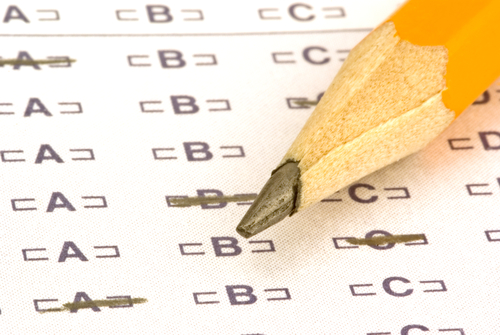
Best Kept Secrets of Improving Your SAT Scores by More Than 10%

SAT is about diligence, speed, and smartness. Practice helps you become more diligent and quicker, but when you adopt the ‘smart’ tips and practice accordingly, you brighten your SAT score prospects exponentially. Here are some best practices, secrets, hacks, and hints to help you with all SAT sections.
Reading
1. Practice the skill of skimming through paragraphs. After each paragraph, assign a mental phrase or title to capture the essence of the content of the paragraph. When you attempt questions, you can then directly hit the right relevant paragraph for better reading, to find the right answer.
2. SAT reading section spans 65 minutes, and has 5 passages. You should average 13 minutes per passage to completely cover the section. After the third passage, you should have 25 minutes in hand. There will always be the one passage that’s there to eat time, so it’s smart to break the section into 2 zones – 40 minutes for 3 passages, and 25 for two.
3. With no guess penalties, you don’t want to skip any question. While working with passages, try to make the guess in the first attempt, because recollecting the intricate meanings and contexts of the content later would be difficult.
Mathematics
1. For questions from geometry and graphs, focus on the diagram. It’s often easy enough to rule out a couple of options based on visual deductions from the diagram. If you’re short on time and want to make a smart guess, this tip works well.
2. The SAT mathematics section is relentless in terms of allowing you space for missing questions or getting your answers wrong. To make matters worse, there are always complicated problem statements that confuse you among several variables. Mark or underline the variable you’re looking to calculate a value for, to avoid mistakes. The answer options invariably also contain the half-baked and incompletely calculated values, so watch out.
3. Looking to maximize your mathematics attempt? Identify unanswered questions where you can plug in one of the options and see if it sits well with the question. If you can rule out 2 choices, this can take you to the answer quicker than solving the problem conventionally. Plug in the middle range value first, so that if it turns out to be wrong, you can figure out whether the correct value would be higher or lower.
Writing and Language
1. While dealing with sentence improvement questions, look at what’s different among the different answer options. What’s changing is where the scope for improvement is.
2. When you’re stuck between two equally decent sentence improvement choices, go for the shorter phrase
3. Unfortunately, there are few grammar shortcuts; your best bet is to spend a lot of time on understanding every grammar rule, to maximize your prospects of getting the perfect score in the writing and language section.
Essay Portion
1. Your interpretations can be wrong, but your facts need to be right. For all conclusions and explanations you write in your essay, cite events, examples, and sentiments from the passage. Remember, even the grader doesn’t know the 100% correct interpretation. Base your arguments on facts, and you’ll score well.
2. Length matters. If you’re unsure, err on the side of more words than less. For an SAT grader, 50 words too less generally means that he/she has a reason to hold back a point. 50 words too much, however, could well earn you an extra point, as the grader will have more exposure to your sense of intelligent writing.
General Tips to Remember
1. You can save 2-3 minutes per section if you fill out the answer sheet bubbles all at once, once you’ve gone through all questions. Please focus, you don’t want to be the person who ran out of time before you could fill out the bubbles, or got the sequence wrong when filling out!
2. Don’t linger on tough questions; most probably, they are there to make you waste time. More than 1 minute on a mathematics question, more than 45 seconds for reading, and more than 30 seconds for writing questions means you’re losing time and might end up leaving some of the low lying fruits un-plucked.
3. Devise a simple scheme of indications to mark questions that you want to revisit later, ones that need double checking, and ones you want to keep for the end because of their complexity. That is just wise!
Written by Benjamin Roussey
Contact us today to learn more about how our tutors can help your child improve their SAT scores!



